Do I need to rake the soil from the heads of garlic before harvesting?
Often the question arises before vegetable growers, is it necessary and possible to rake the earth from the heads of garlic? Judging by the reviews, this agrotechnical technique gives good results. Only this must be done correctly and in a timely manner.
Content
- 1 Do I need to rake the earth from the heads of garlic and why is this done?
- 2 The benefits and harms of exposing garlic in the garden
- 3 When should you dig it out?
- 4 If the garlic heads have gone deep into the ground
- 5 Tips for properly growing garlic
- 6 Why are the tops tied?
- 7 Diseases and pests
- 8 Tips from an experienced summer resident
Do I need to rake the earth from the heads of garlic and why is this done?
It is believed that uncooking has a beneficial effect on the maturation of a good harvest. Rake the earth with special garden tools to half the bulb. There are several reasons why they rake the earth from the heads of a spicy vegetable:
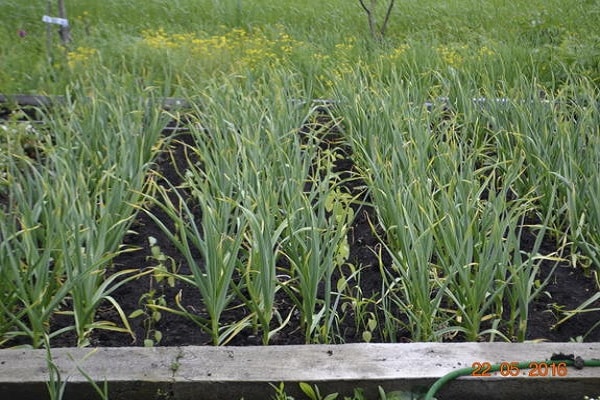
- The size of the bulb increases. The root system, especially of winter crops, is powerful and goes deep into the ground. Deepening, the roots pull the head inward. As a result, it does not receive enough air, nutrients and light.
- On the bare bulb, you can easily track the condition of the crop. This is important when the weather is bad, hot, or rainy.
- The plant does not need to expend energy pushing apart the topsoil, and the bulbs get enough sunlight and warmth.
- The scales will be stronger and the vegetable will last much longer.
The ripening of the crop is evidenced by yellowing, drying and lodging of the leaves of the plant. The scales on the bulb become dry and easy to clean. The arrows straighten, and the boxes begin to crack.
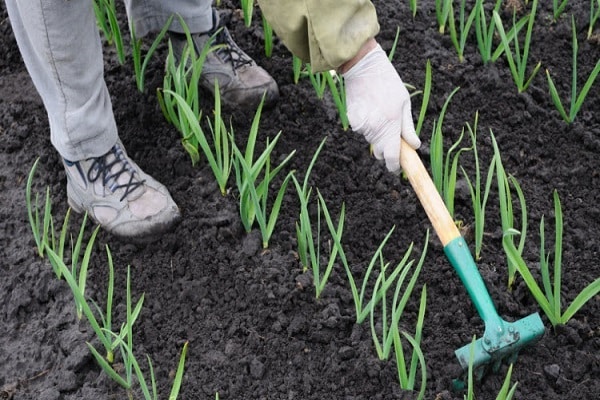
The benefits and harms of exposing garlic in the garden
The benefits of stripping garlic, according to experienced gardeners, is that the bulb receives more sunlight, dries up faster, ripens and receives enough nutrients. In addition, the head acquires the color characteristic of the variety.
The next time it is necessary to rake the earth around the head of garlic, everyone decides for himself on his own based on his own observations. In addition to the positive qualities, this procedure also has disadvantages:
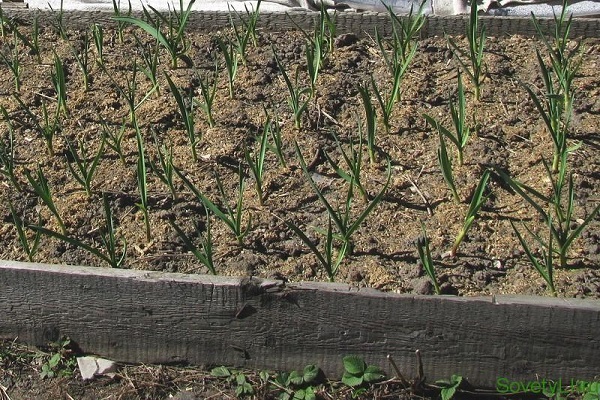
- Since the bulb sits deep in the ground, you will have to rake off a lot of soil, a hole will form. Moisture will begin to accumulate in it after watering or rains. As a result, head rot may develop and yield may be lost.
- In the event that timely loosening of the soil is carried out, the bulb will not go too deep. As a result, you can do without an unnecessary procedure for exposing the head.
Garlic is a light-loving vegetable that does not tolerate wetlands. To achieve a good harvest, you need to choose the right place for planting, prepare the planting material, leave a large distance between the bushes during planting. Care consists in regular watering, applying complex fertilizers, loosening the soil, weeding the beds from weeds.
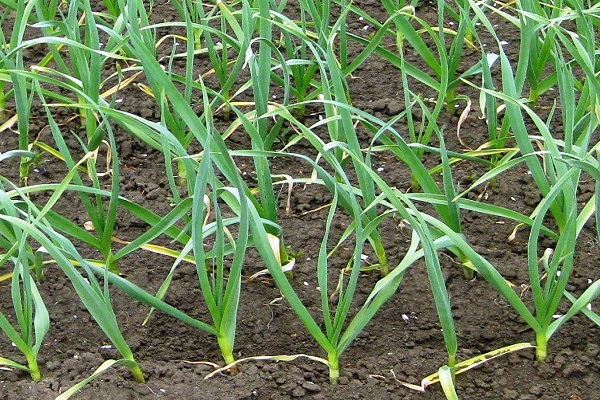
All these features of cultivation will help to avoid mistakes and to resolve the issue of the need to carry out certain procedures.
When should you dig it out?
When you can rake garlic in the garden depends on the variety and weather conditions. Most often, the procedure begins in early July. The procedure is carried out a couple of weeks before the complete harvest. The right time for winter crops is the end of June, for spring varieties of garlic the last days of July are considered the best period.
The exposed garlic heads in the garden will receive more sunlight. But the procedure must be carried out correctly and carefully, while simultaneously loosening the soil in the aisle. If the integrity of the bulb is damaged during the procedure, the risk of rotting and infection with a fungal infection increases.
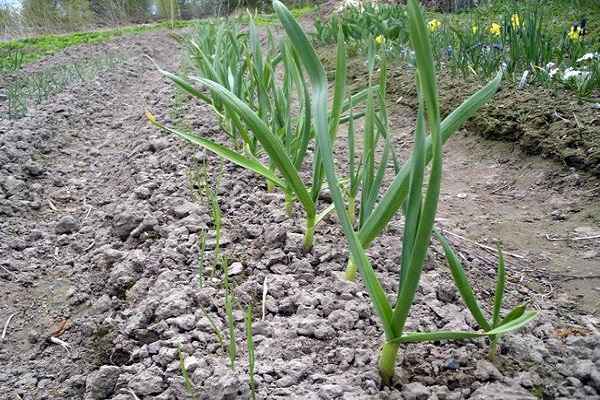
If the garlic heads have gone deep into the ground
Winter garlic is planted deeply (the depth is equal to the height of three bulbs). Such garlic will definitely not sprout in the fall, it will survive the winter well and start growing only in the spring. A strong root system draws the planting material into the ground during the fall. If the winter is very cold, then the garlic will go deep.
For garlic to sprout, there must be loose soil. To do this, in the fall after harvesting and in the spring, you need to apply organic and mineral fertilizers. In this case, it will not be scary when the garlic goes too deep in the soil.
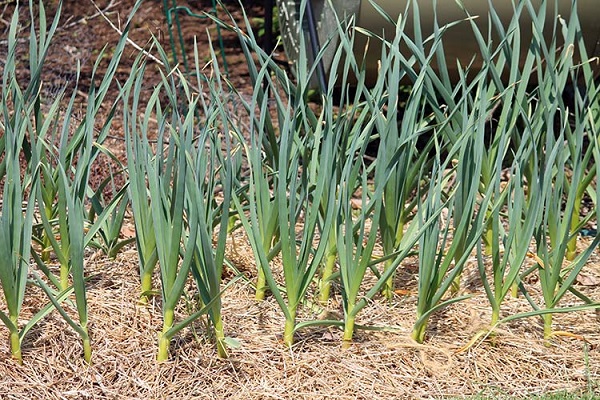
At the beginning of June, approximately 21 days before digging out the ripe heads, the heads of garlic are freed from the ground. Whether it is necessary to do this depends on the quality of the heads, the weather, and the composition of the soil. For example, if the weather is rainy, then such a technique will help reduce the risk of rotting.
At about the same time, the arrows are cut off and they stop watering, loosen the soil and apply fertilizers. Do not worry if the tops are juicy and thick, as they accumulate a lot of nutrients. The leaves are simply tied up to direct the trace minerals to the bulbs.
Cutting off the arrows and raking off the soil contributes to the growth of heads, the accumulation of nutrients in them and the rapid ripening of the vegetable crop.
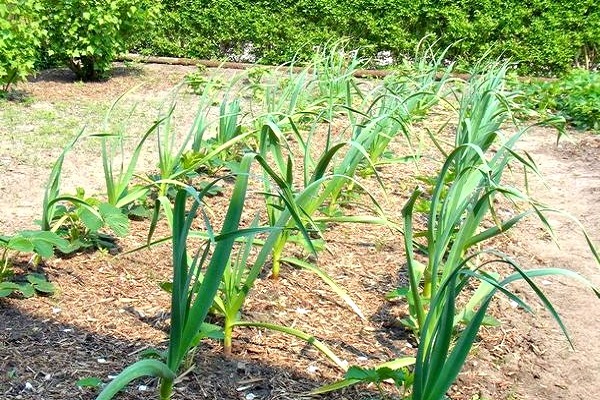
Tips for properly growing garlic
It is best to grow winter garlic in a summer cottage. It differs from spring varieties in a large head and a smaller number of cloves, as well as an early ripening period. The main advantage of spring crops is long-term storage. The heads remain firm and juicy until the summer. The cultivation of garlic involves not only timely watering, weeding, loosening the soil and applying fertilizers.
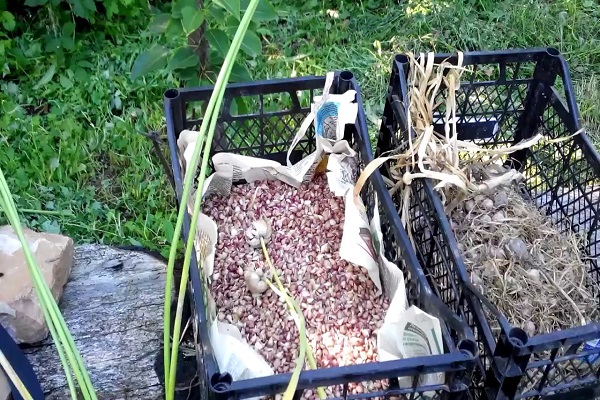
For getting large garlic break off the formed arrows. During the formation of arrows, the plant slows down its growth, and all forces are directed to the growth of seed material. Just do not delete all arrows at once, it is recommended to leave a few. It is by them that you can determine the degree of maturity of the heads. As soon as the arrow straightens, and the seed box begins to crack, you can start harvesting.
Sometimes vegetable growers wonder why garlic goes deep into the ground. This may be due to loose soil, a strong root system of a vegetable and an initially deep planting of cloves. It is recommended to plant garlic cloves in already prepared furrows, 5–6 cm deep. During heavy rains, the soil will be compacted, and the heads of garlic will settle even deeper into the ground.
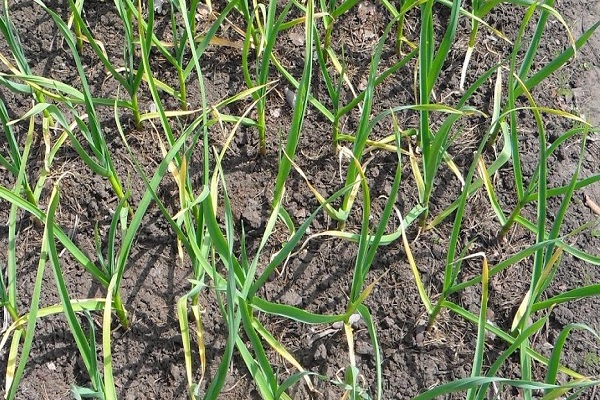
Why are the tops tied?
Another technique that allows you to harvest a good harvest of garlic is to tie the tops in a knot. In garlic, unlike onions, nutrients move more slowly from the leaves to the roots, and feathers die off so quickly.
After the leaves are tied into knots, changes are made to photosynthesis, there is an increased outflow of micronutrients to the underground part of the plant. The leaves begin to dry out, the bulb stops sprouting and accumulates all the useful components.
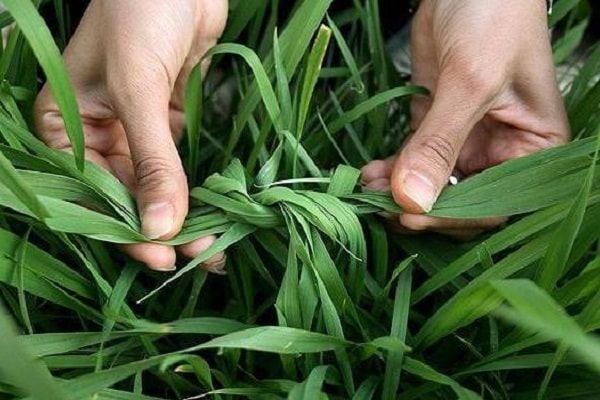
They begin to tie the tops 5 days before the expected digging out of the crop. For arrowhead varieties, remove the arrowhead. Ideally, this procedure is performed a week earlier. But this applies only to winter crops, since spring garlic does not give arrows. The leaves are slightly twisted into a tourniquet and tied in a regular knot. If the tops are short, you can weave a pigtail.
Diseases and pests
Diseases and pests can cause great harm to the crop. Frequent pests that attack garlic beds are root mites, stem nematodes, bears, centipedes, onion moth... Larvae and adults, making holes in the upper layers of the soil, contribute to the fact that the garlic goes deep into the ground. This can negatively affect the development of the head.
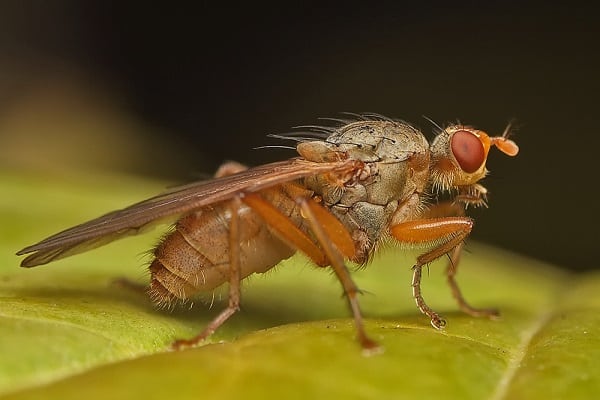
You can save the crop by spraying the leaves with an infusion of tobacco, pepper and wood ash. Sometimes you can't do without the help of insecticides: Actellik, Clofentesin.
Diseases such as rot, green mold, mosaic lead to the fact that the leaves dry, turn yellow, spots of various colors appear on them, plant growth stops, the bulbs stop ripening and begin to rot. For example, fungicides such as Quadris, Alirin, Gamair, Fitosporin will help to cope with diseases.
To reduce the risk of disease, planting material must be carefully selected. Only large, dense, defect-free cloves are suitable for planting. They are placed in a disinfectant solution of copper sulfate, potassium permanganate or wood ash.

Tips from an experienced summer resident
Planting time of garlic depends on the selected type and variety. Planting winter crops begins from mid-September to early October. Spring garlic is planted in spring when the threat of severe frosts is over (around mid-April).
In the reviews of many vegetable growers, you can find the following tips: “I pre-dig the plot for the beds and apply fertilizers. Can be treated with peat, sand, wood ash. A week before planting, it is useful to disinfect the soil by spilling with Fitosporin solution.
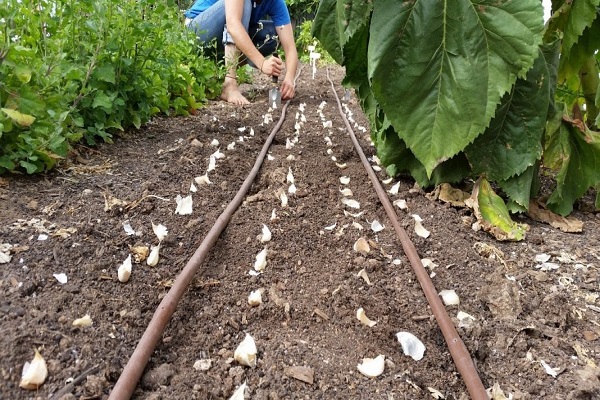
I deepen the cloves of garlic by 6–7 cm and sprinkle with humus. In summer, shoots give shoots that are better to break off, they only interfere with getting a good harvest. "
“Every year we open the garlic, shoveling the soil off the bulbs. Thanks to this, they grow larger, more juicy and aromatic in taste. "
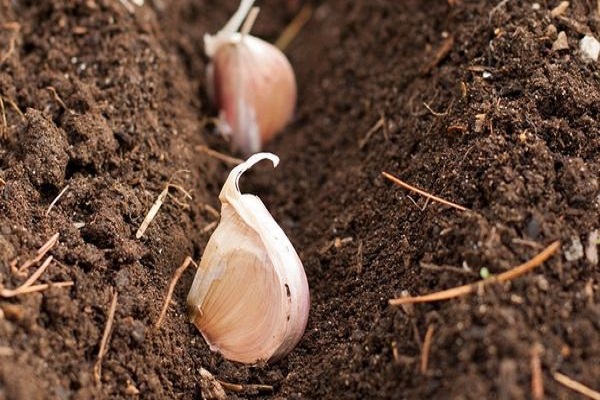

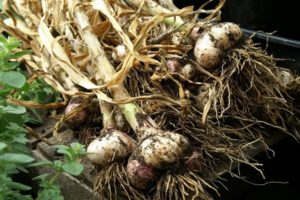
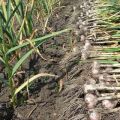

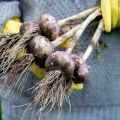
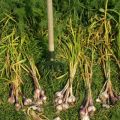
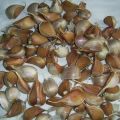

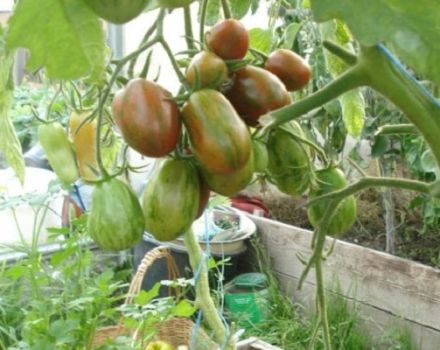

Thank you very much for the article. The dacha is already 30 years old, but I found something important for myself in growing garlic, which I did not know about. Generally a very informative site. I often look here.
To be honest, some kind of nonsense about shoveling, if it comes to that, a week and a half before harvesting, the garlic is undermined, that is, you dig up the earth with a shovel while lifting, but not throwing it out, you get a head in loose earth. Yes, and the bylka begins to dry out, the only drawback is if it rains, cleaning becomes difficult, the garlic is dirty, the earth sticks more strongly.
Good day!
Apparently, you have the only authority in terms of the classification "delusions - not delusions." And it's you. Our articles are written by experts in the field of agricultural technology, are carefully moderated, checked for compliance. No self-respecting site will post delusional, as you say, information.If you have unique knowledge, share it with others. We will familiarize ourselves with them with great pleasure.